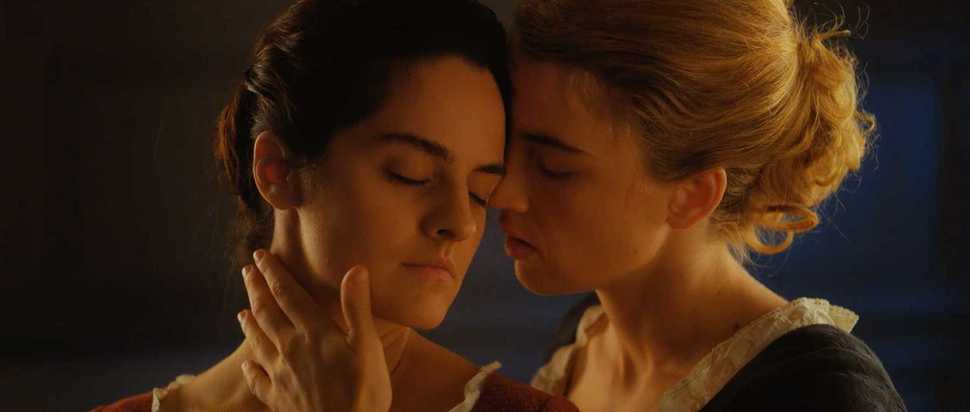Portrait of a Lady on Fire
French director Céline Sciamma's imagined historical romance is a love story for the ages
Céline Sciamma’s period romance is an ode to memories – their creation in the moment and their framing of the past – as much as it is to lost love. The experiences of time, desire, and active observation weave throughout Portrait of a Lady on Fire, which follows the painter Marianne (played by Noémie Merlant) as she is commissioned for a pre-nuptial portrait of Heloise (played by frequent Sciamma collaborator Adèle Haenel). The challenge comes from the fact that this work must be completed without the latter’s knowledge, as she rejects a match to a man she has never met. Instead, the painter and her subject fall in love. Time, however, is against them, as Heloise’s arranged marriage approaches and the painting must be finished.
The unmistakable, unapologetic queer female gaze behind and on camera centres the perspective in a self-reflexive authenticity, defining the lesbian love story without reference to anything other than the women involved (on a tangentially related note, it is a refreshing change in today’s film industry when male characters barely speak four lines throughout a film). Marianne and Heloise’s watching is a powerful act, as the women’s arts-based courtship and Claire Mathon’s cinematography subvert the idea of the object of desire by pulling her from passivity. Their romance springs from quiet yet explicit observations, as the seemingly self-sufficient woman and the recent convent charge prove more multifaceted as they challenge the other to define autonomy, mythology, music, and the inherent poetry of memories.
Sciamma’s script and story never dwells in darkness, often instead finding levity and solidarity in the more unpleasant realities of womanhood in the 18th century. That said, an awareness of these daily violences and restrictions is tangible, notably in an abortion subplot involving Heloise’s housekeeper Sophie (Luana Bajrami). The search for more time as the film races towards its inevitable conclusion is similarly melancholic, yet never overwhelmingly so – Heloise and Marianne may giggle about a plant that is said to make time last longer, but the underlying heartache is palpable.
Portrait adheres closely to Marianne’s point-of-view, and Merlant is almost constantly on screen as a result. She foregrounds Marianne’s assuredness in her life, career, and choices while allowing an awareness of their fragility to leak through. Haenel plays Heloise’s quiet defiance without bitterness, conveying a similar understanding of her situation with a determination to find freedom. While Sciamma, Haenel and Merlant leave some moments and motivations purposefully ambiguous, Heloise and Marianne’s agency is never in question. This is the crowning achievement of Portrait: the tragedy of the ending is somewhat tempered by the moments of liberty stolen and celebrated by its central lovers, creating a dichotomy of acceptance and heartbreak
Portrait of a Lady on Fire may almost be too polished in the way it observes the life cycle of an impossible love affair and the most difficult choices that entails. Such precision, however, can hardly be called a flaw, and it catapults the film to cinematic greatness when combined with the assured insight Sciamma and her cast bring to the lesbian romance. “If you look at me who do I look at,” Heloise askes Marianne during one of her sittings. No definitive answer is given, but the aching beauty exploring the expression of desire make Portrait a love story for the ages.
